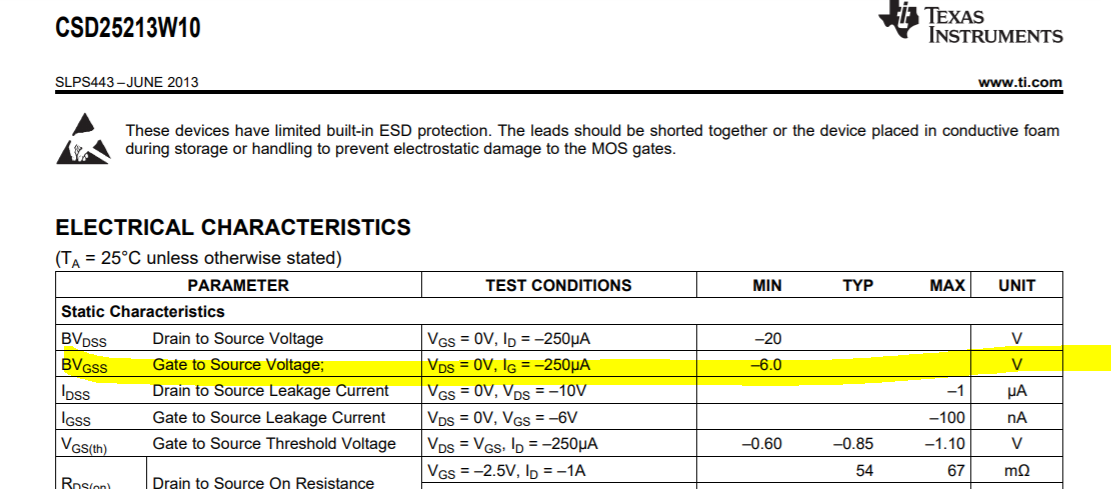So how negative can I drive the Vgs of an N-channel Mosfet before damage occurs? Datasheets specify BVDSS and BVGSS but these are "forward" breakdown voltages -- ie the absolute maximum Vds before avalanche breakdown of the drain body pn junction, and the maximum gate drive voltage before the electric field breaks down the gate oxide. I can't find the "negative" breakdown voltages in the device specifications.
Does the susceptibility of the gate oxide to an excessive e-field then suggest that the maximum "negative" Vgs is the same as the BVGSS specified but in the opposite polarity?
EDIT: Here's a portion of the p-channel device I was looking at that prompted the question:

